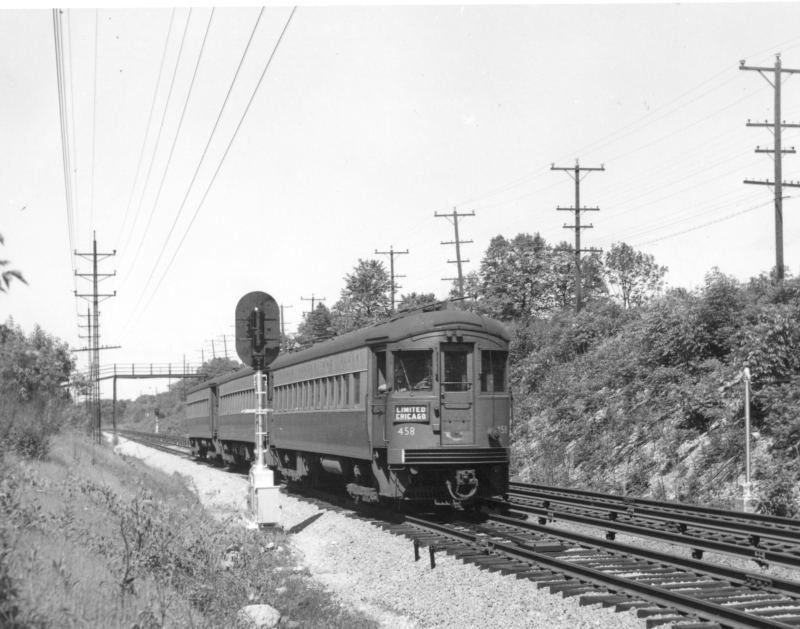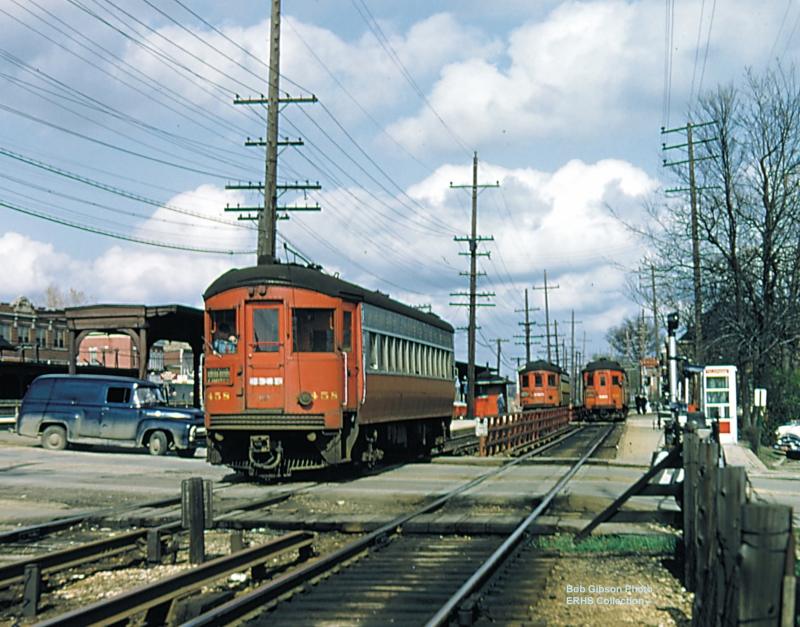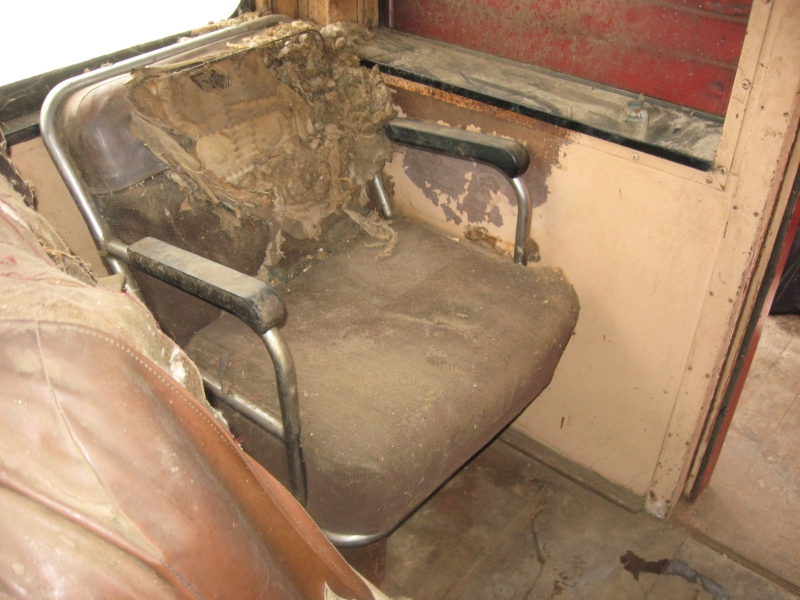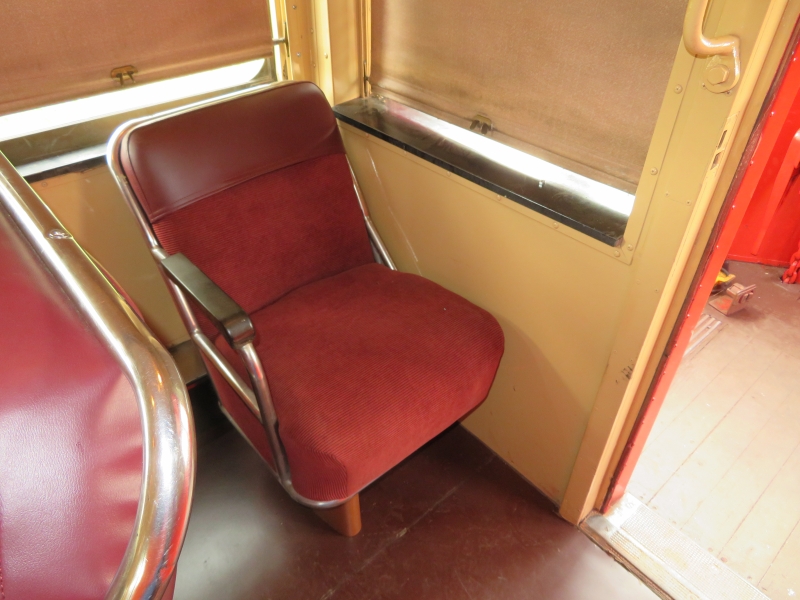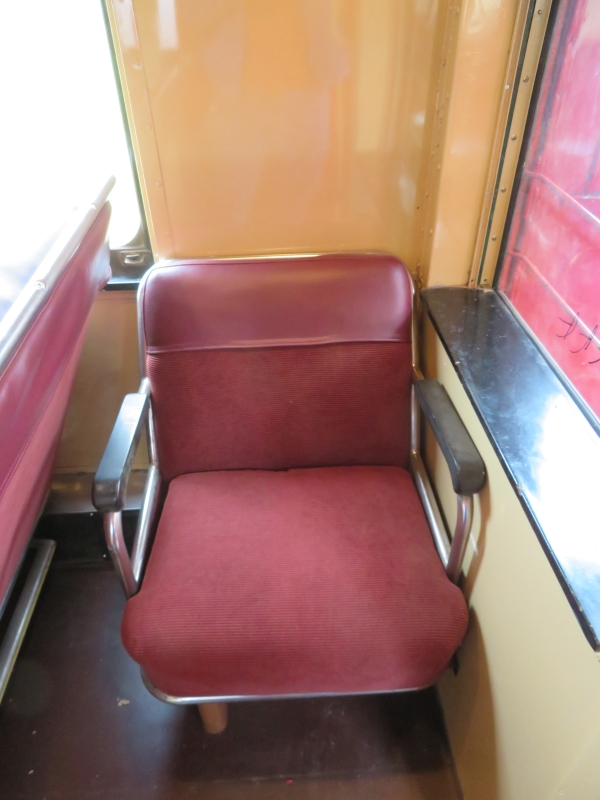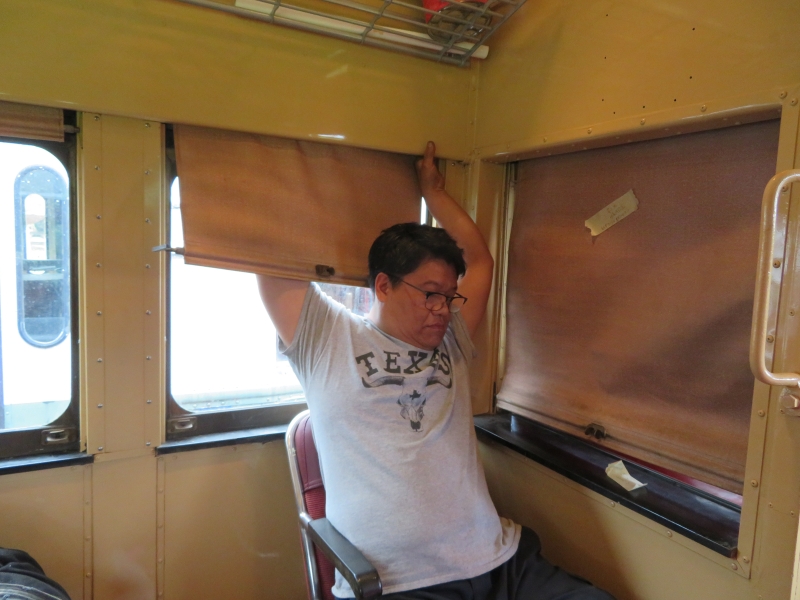Members Only |
CA&E 458
Interurban car 458 and her nine sisters were designed by the St. Louis Car Company for the Chicago Aurora & Elgin and ordered in 1941 but with the United States being plunged into World War II on December 7th, which brought about the War Production Board, changed things. This agency would not approve their construction until 1945 as it allocated material and factory capacity for the war effort. It is interesting to note that these cars would have “fish belly” or curved sides just like the two amazing “Electroliner” trains they delivered to the North Shore Line in February 1941 before America entered the war. There would be other innovations which would separate them from the other two classes of CA&E steel cars, the 1923 Pullman (400-419) and the 1927 Cincinnati (420-434) cars, although all three types would be able to operate together in a train. 458 and her sisters weighed just over 43 tons while the Pullmans were just under 52 tons and the Cincinnati cars came in at 55 ½ tons. This lighter weight allowed a cost saving in power consumption as well as wear and tear on the railroad’s track structure. Like the 420 series cars, these St Louis cars had battery powered interior lighting which would stay on even if a single car temporarily lost power while bridging the third rail gap at a highway grade crossing. Also, like the Cincinnati cars, the 450’s had walkaround seats, but they were a little wider because of the extra space available due to the curved sides. This type of seating requires sequential turning at the end of the line, unlike the walkover seats, which can be individually flipped, as in the Pullman group of steel cars and all previously built wood cars then on the roster. The propulsion system was also innovative with smaller 300-volt motors permanently in series to accept 600-volts on each truck, which was part of the weight saving design. This concept was latter repeated, along with the curved sides, in the 6000 series rapid transit cars built later by St. Louis Car for the CTA. Some changes were made once the cars were in service. A swing link system on each truck was disconnected early in their operational life to cut down on side-to-side rocking at slow speeds. As built the cars had a true “deadman’s” feature in their controllers which put the air brakes into emergency when the handle was let up. This was disabled and the controller handles were replaced with ones that more resembled all other controller handles used in train operation on the railroad to insure consistent operation by motormen at the request of their union. 458 has one of the original handles (but without the deadman feature) at one end and the replacement handle in the other cab. The cars were equipped with a speedometer in each cab, but these were gradually disabled, as maintenance on the mechanical sending units was too complicated and time consuming for the Wheaton Shop to handle. Half of the ten-car order were equipped with water flush type toilets. 458’s toilet has been restored but is nonfunctional as it is not practical to keep power on in the winter to prevent the water in the storage tank from freezing and more practically it is no longer legal to dump waste onto railroad tracks. When the cars were in service on the CA&E, one of the conductor’s duties was to lock the restroom while the car was operated on the L in Chicago for obvious reasons. This was also true of North Shore trains until they stopped running in January 1963. In the 21st century modern railway cars now use holding tanks for waste which are emptied at service facilities. 458 and her sisters served the CA&E very well for just over twelve years until passenger service was abandoned in July 1957. All rolling stock was retained in the Wheaton yards as various proposals were unsuccessfully floated to revive passenger service. The North Shore commuter’s association had an option on the ten St. Louis cars for potential use on that line but that never materialized with that line’s abandonment. Gerald E. Brookins of Olmsted Township, Ohio had developed a high-end trailer park, Columbia Park. As he laid out the streets of Columbia Park, he also left room for a trolley line to wind through it. In 1954 Mr. Brookins purchased the first cars for his developing trolley line. These 4 cars, which included Fox River car 304, were the first cars of his collection which soon became known as “Trolleyville USA”. He began adding cars from all over the US and the world. When the Chicago Aurora and Elgin cars became available, it was a chance to acquire examples of cars that had disappeared from Ohio a couple decades earlier. He was going to get interurbans, just like the cars he remembered from his youth. He arrived in Wheaton with check book in hand and purchased a total of eight CA&E wood and steel cars including 458 and three of her sisters. These cars were moved on their own wheels in a special train first by the Chicago & Northwestern to Chicago. The New York, Chicago & St. Louis Railroad, better known as the Nickle Plate, took over in Chicago and moved the cars to Cleveland, again on their own wheels. At Cloggville, a junction on the west side of Cleveland, the cars were handed over to the New York Central. They moved them the last several miles to a siding opposite the Olmsted Falls depot. Here a house mover took over for the last mile andmoved each car singly to the trailer park. Cars 451 and 460 were operated at Trolleyville regularly. 460 remained in Chicago, Aurora and Elgin colors. 451 received the green and yellow colors of the Cleveland, Southwestern and Columbus interurban line that once served the area. 453 and 458 sat on the sidelines mostly. 458 was chosen by Mr. Brookins in 1975 to be restored to operation and was to become his Bicentennial car. A paint scheme was designed, and work began on the car. A portion of the car body was painted white. But the project was abandoned before the Bicentennial and the car went back to sitting. By this time 458 had become a confirmed parts donor and storage facility. Other items found their way into the car including a set of pipes for a theater pipe organ. As such it was ultimately stored outdoors, the organ pipes removed but their wrappings left behind and small animals came to use the interior as a home. Mr. Brookins sadly passed away from cancer in 1983. Surprisingly, interest in Trolleyville remained strong. Gerald’s widow Alice was still the family matriarch and strongly supported the idea of her husband's Museum continuing. Grandson Mark was appointed Museum Director. During this time additional cars came to Trolleyville. These included Toronto and Shaker PCC’s as well as the boxmotor OX from the Shaker Heights Rapid Transit. Trolleyville continued on for many years and developed a loyal set of volunteers and a couple paid staff to operate it. In the late 1990’s Alice Brookins passed away. That was a turning point for the trailer park as well as Trolleyville. Columbia Park was sold on June 25, 2001. The terms of the sale stipulated the museum be moved from the park within five years. It was decided to move the trolleys to the lakefront in downtown Cleveland to form the Lakeshore Electric Railway Museum. A temporary storage facility, a disused shipping warehouse, was procured from the City of Cleveland at Dock 32 on Lake Erie to store most of the cars indoors. The CA&E cars and Shaker Heights box motor OXwere stored on a little used track under Tower City Center on RTA. This track had formerly been part of the Shaker Rapid station at this site. CA&E cars 460 and 303 were fitted with pantographs so they could control trains of either wood or steel equipment. CA&E 36 and 303 were operated a couple times for special events on the Greater Cleveland Regional Transit Authority rapid transit lines. With the economic downturn of 2008 it became evident that the Lakeshore Electric Railway Trolley Museum would not be viable. In early 2009 the decision was made to disband and sell off the assets to satisfy debts. For the next few months, the Brookins Family and the Board of the Lake Shore Electric Railway Museum figured out what to do and how to do it. The late Dave Carpenter, a board member with Lakeshore realized that several pieces of the collection would find multiple museums battling over them, while other assets would go waiting. He knew a fight among museums could cause harm to the Museum industry. He came up with the idea of allowing a consortium of museums to be formed. This consortium would make all the decisions on where assets, cars parts, etc. would go while guaranteeing enough revenue to satisfy the debts of theMuseum. Bill Wall, a well know deal maker in the trolley industry, was asked to head up the consortium. Bill became referee and decision maker when conflicts arose. He made sure the financial obligations were met and worked to get cars and assets to where they made the most collections sense. This is how the Fox River Trolley Museum was able to purchase 458 and Shaker Heights/Aurora Elgin & Fox River Electric Company 304 to enhance its collection. Two Fox River volunteers went to prepare the 458 for transport from an RTA service facility, removing a dumpster load of debris, which included a raccoon skull, from the interior, in January 2010. Silk Road Transport, of Arkport, New York, a well-known highway transport firm specializing in moving transit cars, loaded the car in its entirety and then followed a specially permitted route through Ohio, Indiana and Illinois to the museum where the car was rolled off the special trailer and onto the AE&FR rails alongside Highway 31 to begin a thirteen-year effort to restore the car to operation. The missing cover for the electric reverser under the car was fabricated, a burned-out field in the compressor motor was replaced and the battery charging system repaired. Air brake components were reinstalled and the trolley poles, which had been removed for highway transport, were reattached with rehabbed trolley bases. As this was going on, a former member spent many an evening after work, prepping, priming, and painting the underbody equipment and trucks. Knowing that the upholstery was beyond reuse, another member arranged to have a professional transit seating company recover all the seat backs and cushions which were then put in secure, off-site storage. Section by section of the red portion of the exterior of the car was repainted. The car became operable, but many defects including the seating, precluded public operation. While attempting to do some spot repairs to the roof it became obvious that the whole wooden portion would have to be replaced, no easy task with the compound curves over the vestibules at each end of the car. As efforts to restore CTA 4451 were coming to completion, 458 entered the car barn for this extensive roof work. Work on the interior of the car began in earnest starting in 2018. Parcel racks were removed as where all seat frames. The ceiling and walls were stripped, primed, and painted. The old worn linoleum flooring was removed, and new in-kind flooring was installed. In the 2023 season the rejuvenated parcel racks, and seat frames were installed after light fixtures and heater vents were put back in place. All the shades, original to the car, which had been removed, were washed, and eventually put back in place. Next came the seat backs and cushions which had been in storage for years waiting for the day to be reunited with the car. The car temporarily went back in the carbarn so that the exterior gray could be repainted after prepping, and the letter boards re-lettered. An Edison-cell battery tray with a defective cell was replaced by a spare tray acquired with spare parts from the Lakeshore sale in Cleveland. Shakedown runs were taken, and adjustments made to the air brake system to get it reliably functioning. In the end, after years of many workers’ efforts, the museum now has a car that can be operated in all seasons and one which once roamed what is now the Illinois Prairie Path. |
